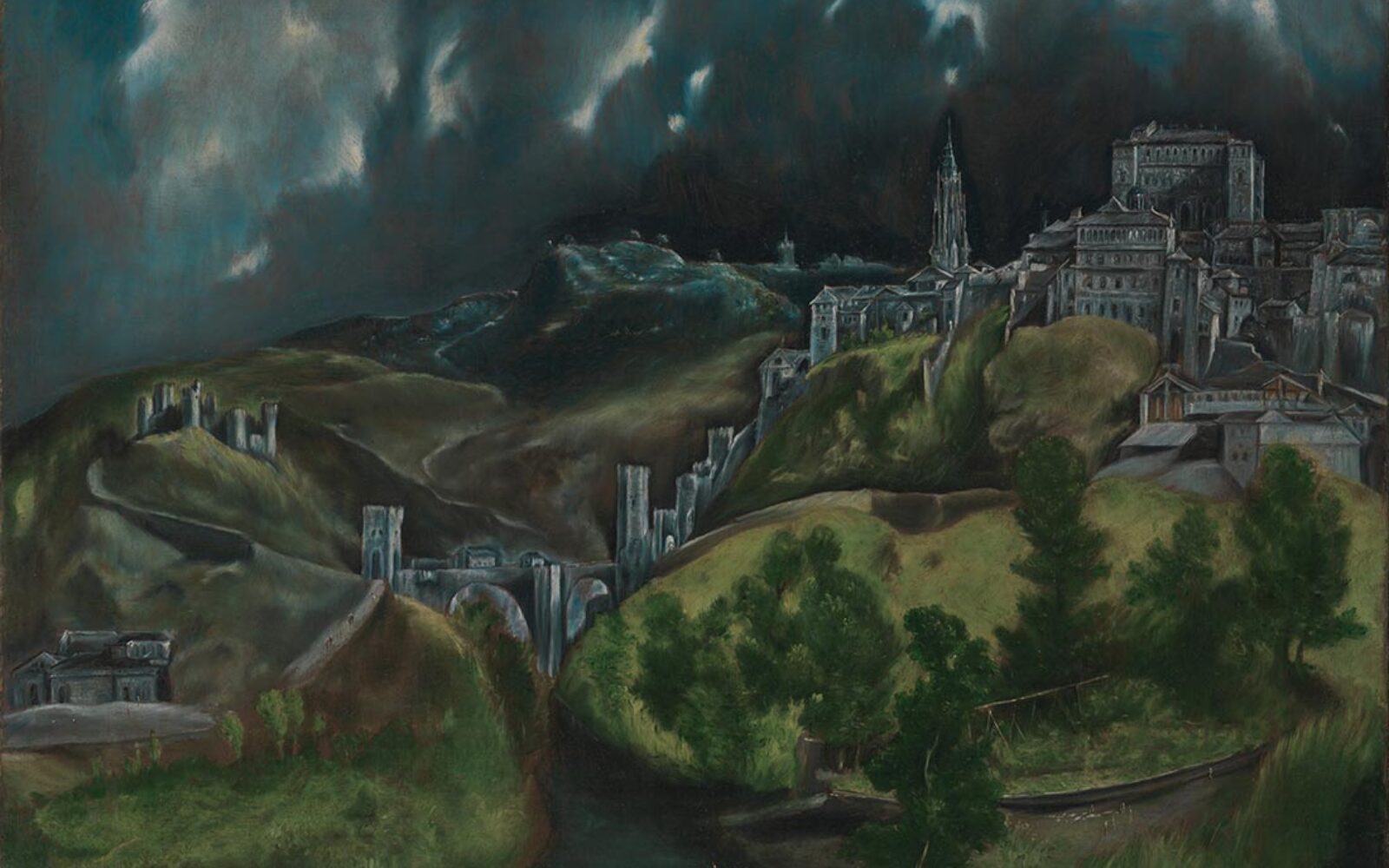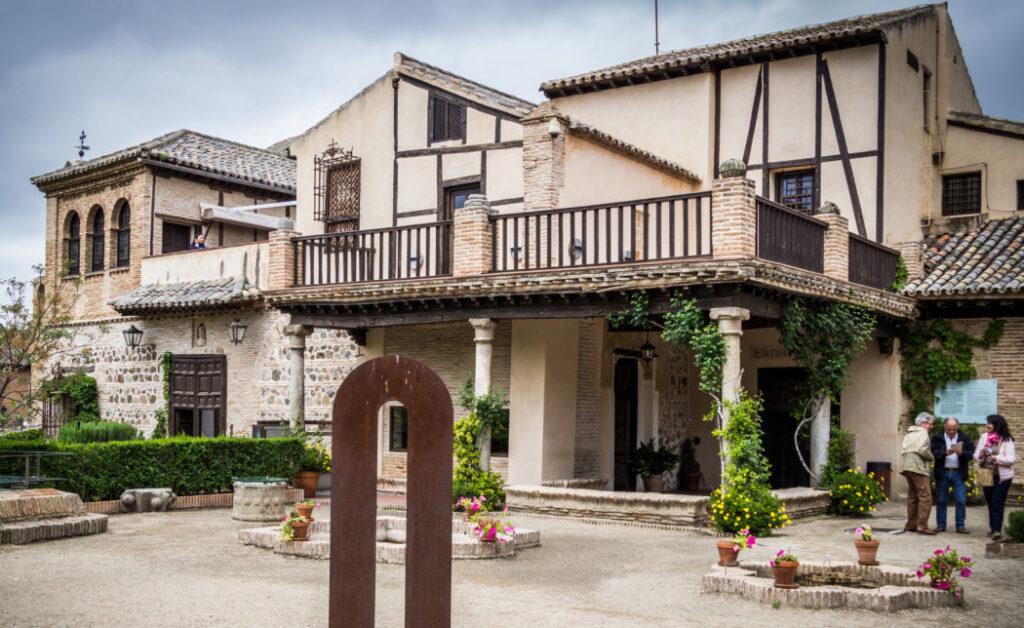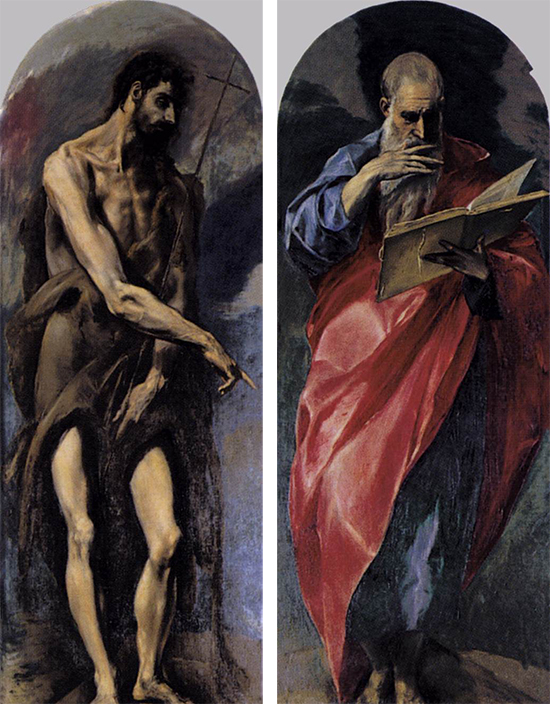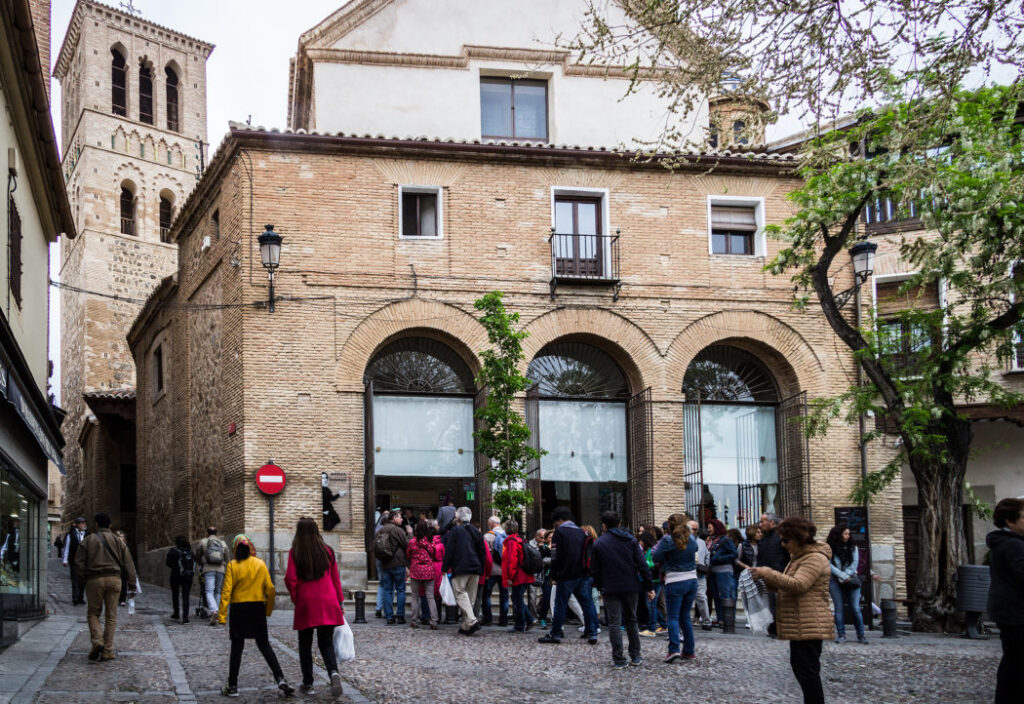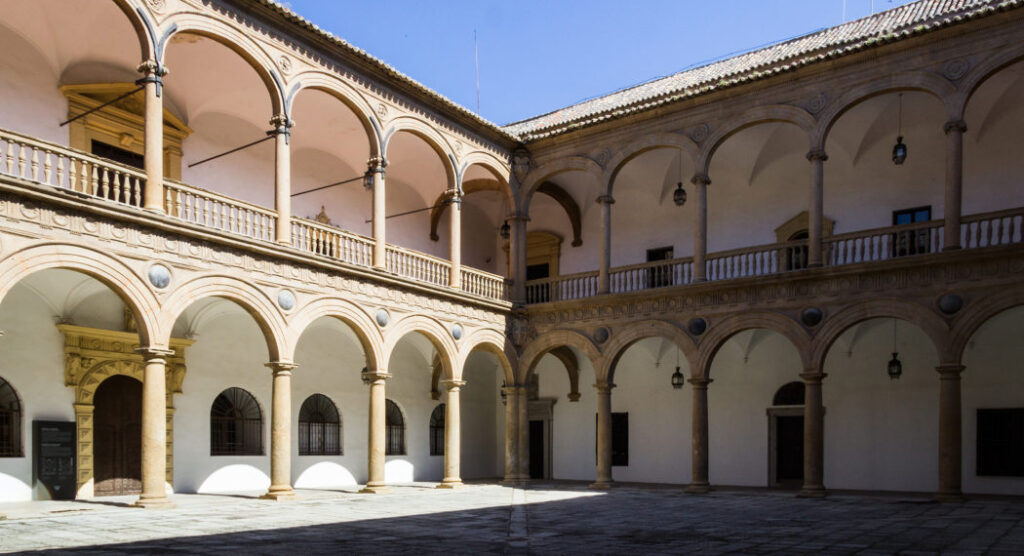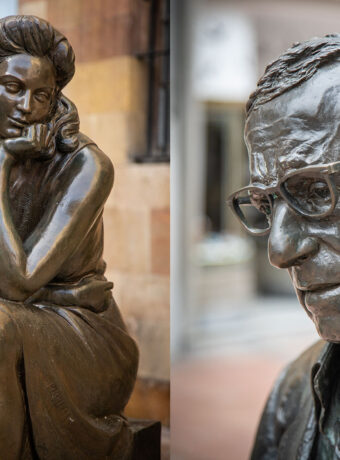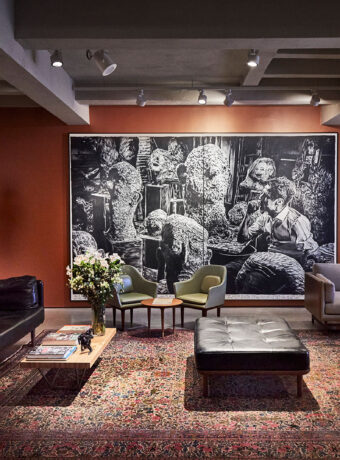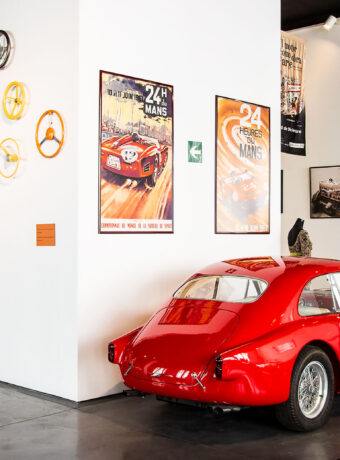The painter El Greco lived in and made Toledo famous with his landscape paintings of the city. Walk in the artist’s footsteps through Toledo and see some of his most famous works and the places that have had an impact on the artist.
El Greco – born Domenikos Theotokopoulos (1541-1614) lived and worked in Toledo for half his life, and this period was the most fruitful of his life.
The painter was born in Crete, hence the nickname El Greco (the Greek), and he first came to Toledo to work in 1577. For a time he worked for Felipe II in Madrid, but as his work was not appreciated, he settled in Toledo in 1583 and lived there until his death.
El Greco was attracted by Toledo’s cosmopolitan character and rich cultural life. The city was then the intellectual and spiritual centre of Spain, and the combination of science, faith, reason and emotion suited the artist well. Several of El Greco’s paintings move between dream and reality, including his Toledo paintings.
1. El Greco Museum
Located in the Jewish Quarter, the El Greco Museum stands out from the neighbourhood’s historic buildings with its modern green façade and black logo. The museum also consists of another building, a 16th-century house museum, located in the common courtyard and decorated in an attempt to recreate El Greco’s home, which no longer exists.
The combination of a modernist and an old building symbolises that the Museo del Greco is both looking backwards and forwards. The museum houses a collection of El Greco’s works, especially from his late period when he lived in Spain. You can see a series of portraits and the famous Vista y plano de Toledo (View and Plan of Toledo). Also of interest is the collection of some of El Greco’s pupils’ works, where you can study how the pupils each tried in their own way to emulate the great master. 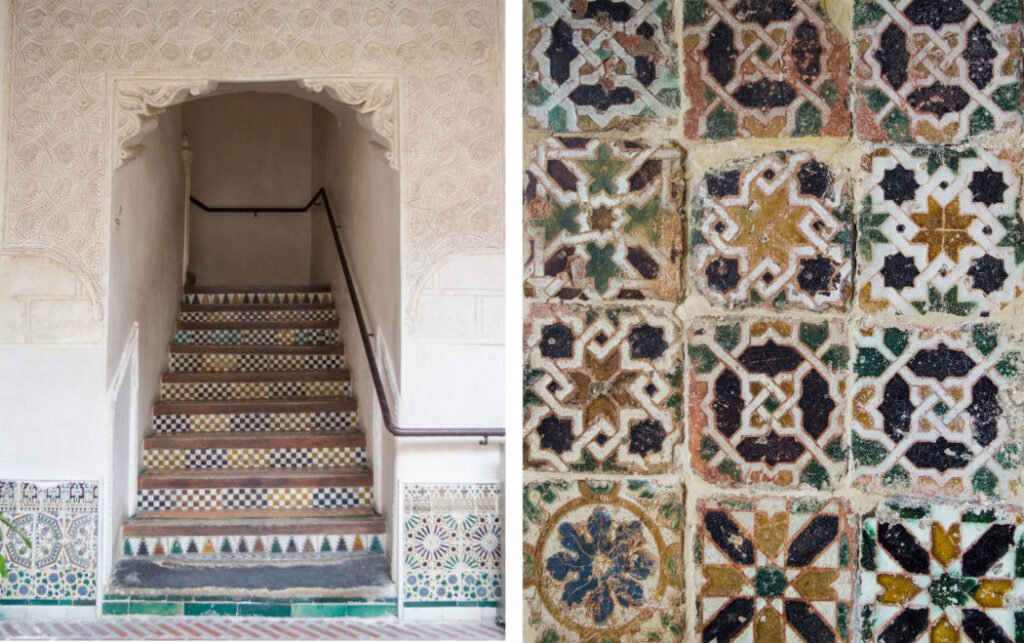
The 16th-century building was bought by the museum’s founder, Marquis De la Vega-Inclan, believing it to be the artist’s former home. Now the building is decorated as El Greco’s home is thought to have looked on the site where parts of his home probably stood.
In addition to works of art, you can see furniture from the period, fine ceramic bowls in the kitchen and ceramic tiles on the walls, stairs and floors.
The courtyard garden is a lovely oasis with fragrant flowers and small fountains. In contrast to the old house and courtyard, the giant metal GRECO letters are scattered individually across the site.
El Museo del Greco
Paseo Tránsito (show on map)
2. Santo Domingo El Antiguo Monastery
El Greco’s first commissions in the city were for Toledo’s oldest monastery, Santo Domingo El Antiguo (from 1577), and they were the reason he first came to Spain.
El Greco was commissioned to work on the altarpieces. Only three of the original paintings remain, John the Baptist and the Apostle John at the main altar and the Resurrection in the side altar.
The artist was buried in the crypt, where his remains were preserved until they were supposed to be moved to the church of San Turcuato.
Monasterio santo domingo el antiguo
Plaza de Santo Domingo ‘El Antiguo’ (show on map)
3. The Church of Santo Tomé
![]() El Greco’s great breakthrough came with his 1587 work El entierro del conde de Orgaz (TheBurial of Count Orgaz), now considered his magnum opus. Count Orgaz, who financed a rebuilding of the church of Santo Tomé, died in the 14th century, and a few hundred years later, El Greco was commissioned to depict his funeral.
El Greco’s great breakthrough came with his 1587 work El entierro del conde de Orgaz (TheBurial of Count Orgaz), now considered his magnum opus. Count Orgaz, who financed a rebuilding of the church of Santo Tomé, died in the 14th century, and a few hundred years later, El Greco was commissioned to depict his funeral.
The myth says that a miracle occurred during the Count’s funeral, when two saints were sent down from heaven to lay the Count in his grave. El Greco’s painting depicts the miraculous circumstances surrounding Orgaz’s burial. And the work features participants such as musicians, the king, John the Baptist, the Virgin Mary, the local priest and the parishioners. El Greco has also sneaked a family portrait into the work, in which both he and his son appear.
The painting hangs in the side chapel above the place where Count Orgaz is buried.
Iglesia de Santo Tomé
Plaza del Conde 4 (show on map)
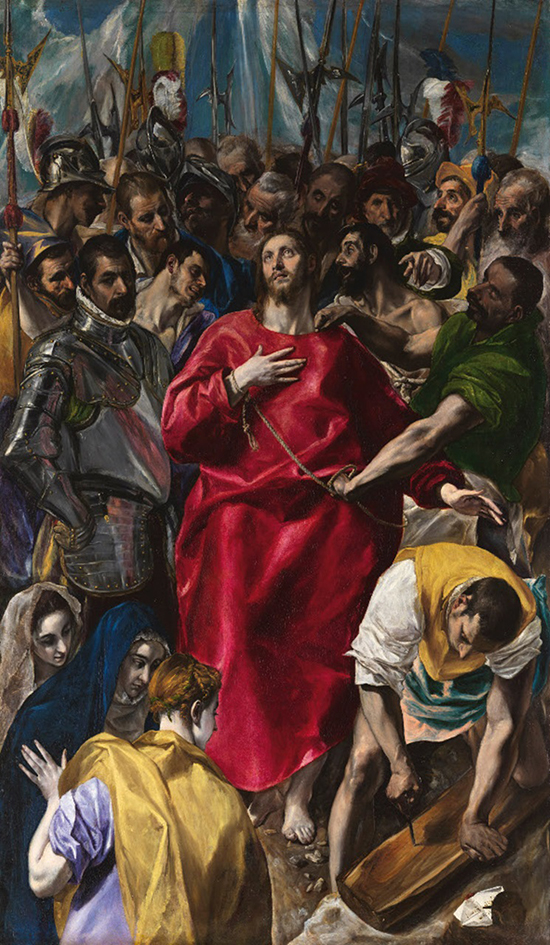
4. Toledo Cathedral
In the sacristy of Toledo Cathedral hangs the painting El Expolio of Christ, created by El Greco in the period 1577-79.
The 285 cm high and 173 cm wide painting is one of the artist’s first major works for the city, and the only one commissioned by the city hall. The work was briefly restored at the Prado Museum before returning to Toledo in 2014.
In the cathedral you can also see El Greco’s paintings San Francisco, Santo Domingo de Guzmán, Las Lágrimas de San Pedro, Cristo en la Cruz and San José con el Niño. In the cathedral you will also find one of the artist’s few sculptures, La imposición de la casulla a San Ildefonso.
Santa Iglesia Catedral Primada de Toledo
Calle Cardenal Cisneros 1 (show on map)
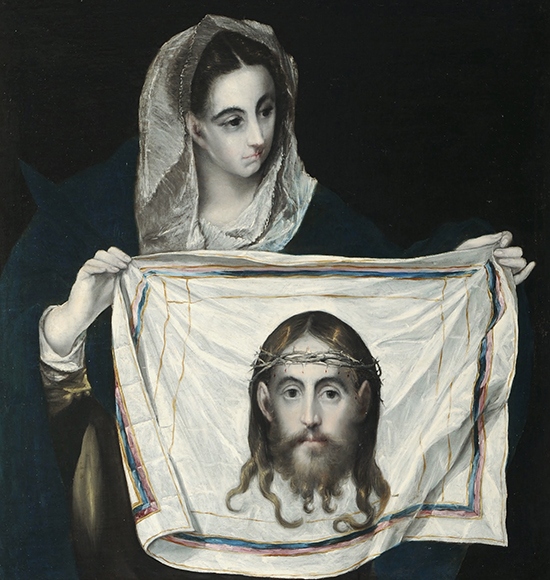
5. Santa Cruz Museum
In the town’s central square, Zocodover, the Santa Cruz Museum is housed in a beautiful 17th-century building that used to be a hospital. The museum has a handful of El Greco’s works, including some painted for the Oballe Chapel in the church of San Vicente. The painting of the Virgin Mary, La Inmaculada Concepción, is one of them, and it is considered one of the masterpieces of the Greek painter.
At Santa Cruz you can also see La Verónica con la Santa Faz, also known simply as “La Verónica”, which El Greco painted in several versions, Testamento estético, La Sagrada Familia, San Ildefonso and Santiago Peregrino.
Museo de Santa Cruz
Miguel de Cervantes 3 (show on map)
6. Hospital de Tavera
The last, but important, stop on the El Greco route is another former hospital – Tavera – located just outside the old city walls in Toledo’s historic centre.
Hospital de Tavera has a gallery that is a glowing tribute to El greco. Here you can see the Sagrada Familia con Santa Ana, where Santa Ana nurses the baby Jesus, El Bautismo de Cristo, the portrait El Cardinal by Cardinal Tavera and the 47 cm high sculpture Cristo resucitado
In the side chapel of the beautiful arcade in the double courtyard, worth a visit in itself, you’ll find El Greco’s unfinished altarpiece.
Hospital de Tavera
Calle Duque de Lerma 2 (show on map)
Also read the guide for other things to do on a day trip to Toledo.
